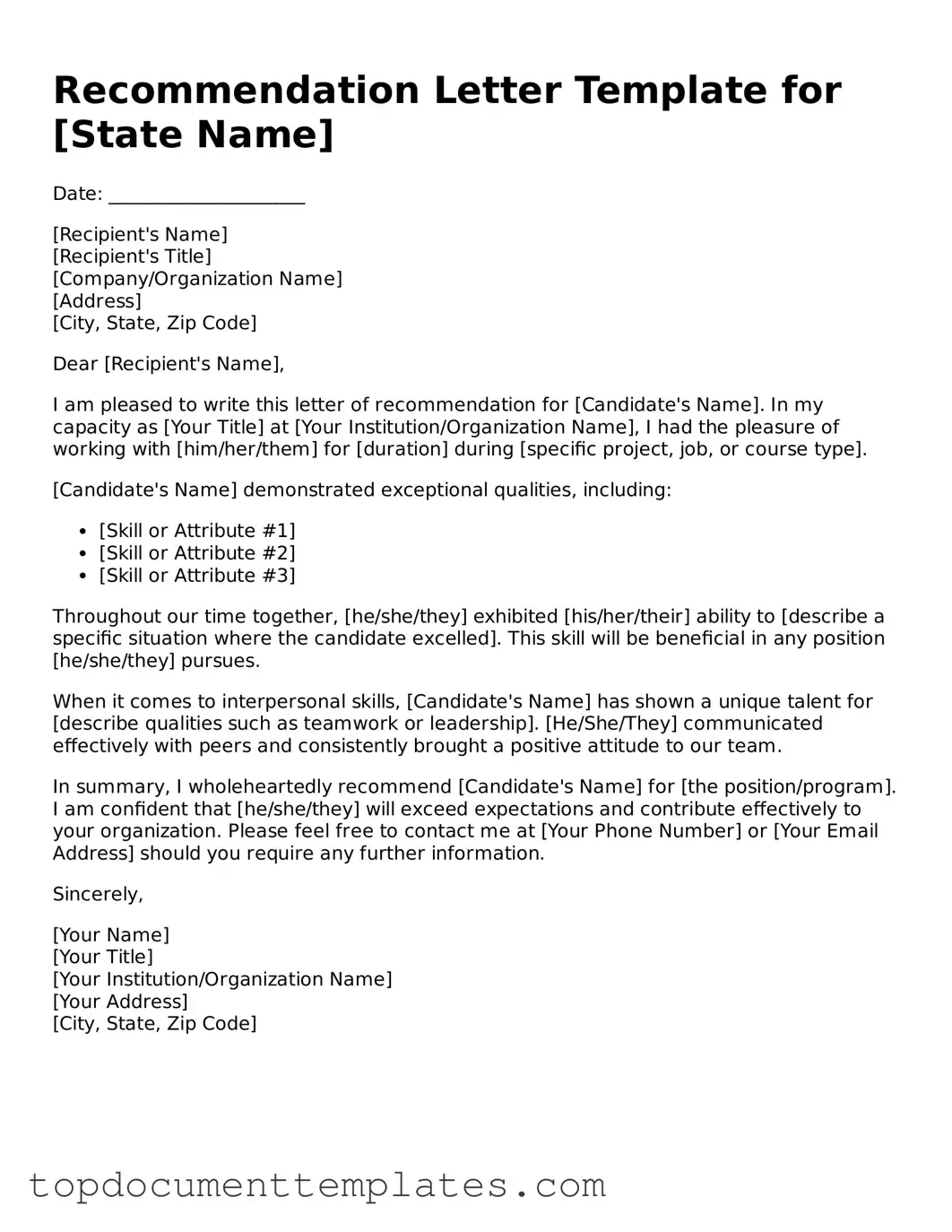When seeking opportunities in academia, employment, or other professional ventures, a recommendation letter can play a pivotal role in shaping one's prospects. This form serves as a structured way for individuals to request a written endorsement from someone who can vouch for their qualifications, skills, and character. Typically, the form outlines essential components, such as the recommender's contact information, the relationship between the recommender and the individual being recommended, and specific qualities or experiences that the recommender should highlight. Additionally, it may include instructions on how to submit the letter, ensuring that the process remains streamlined and efficient. By providing a clear framework, the Recommendation Letter form not only facilitates communication but also helps to ensure that the letter is tailored to the needs of the applicant, ultimately enhancing their chances of success in their endeavors.
